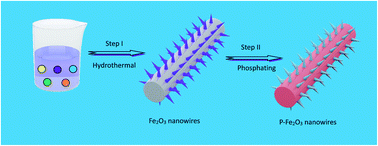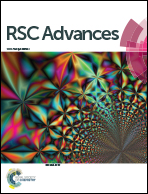Rational construction of free-standing P-doped Fe2O3 nanowire arrays as highly effective electrocatalyst for overall water splitting
Abstract
Designing electrode structures with high activity is very significant for energy conversion systems. However, single electrode materials often exhibit poor electronic transportation. To address this issue, we prepared P-Fe2O3 nanowire arrays through a convenient hydrothermal and phosphation method. The as-obtained electrode materials exhibited excellent electrocatalytic performance, which could be attributed to the P element decoration improving the reaction active sites. The as-obtained P-Fe2O3-0.45 nanowire arrays exhibited excellent OER activity with a low overpotential of 270 mV at 10 mA cm−2 (72.1 mV dec−1), excellent HER performance with a low overpotential of 126.4 mV at −10 mA cm−2, a small Tafel slope of 72.5 mV dec−1 and long durability. At the same time, the P-Fe2O3-0.45 nanowire arrays possessed a low cell voltage of 1.56 V at 10 mA cm−2.



 Please wait while we load your content...
Please wait while we load your content...